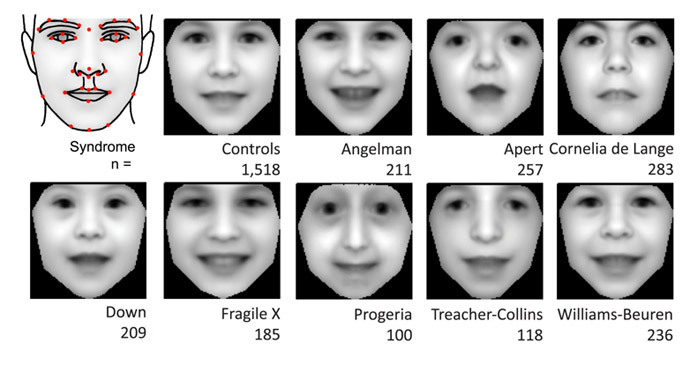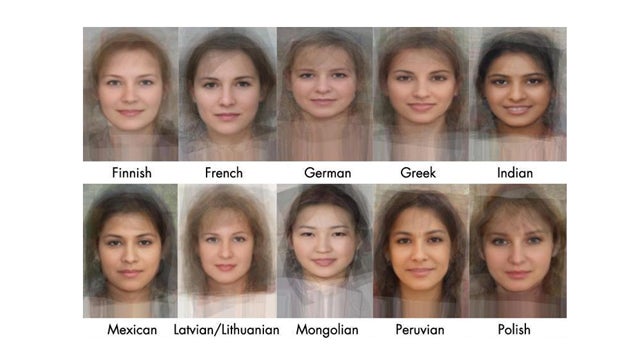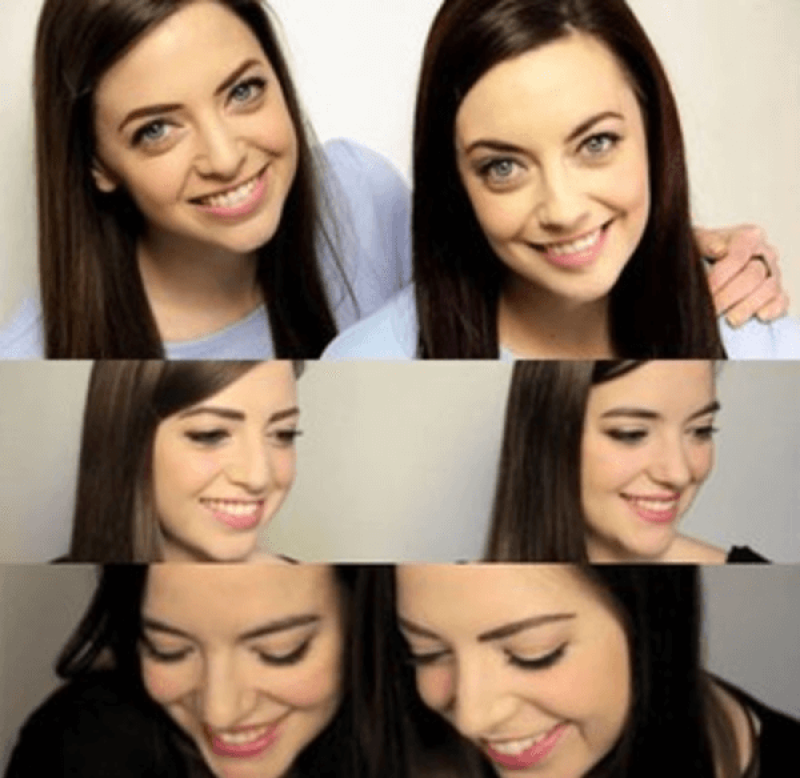While most “matches” were only distantly similar when viewed with a tilted head through half-closed eyes, once in a while, a jaw-dropping doppelgänger showed up. Niamh has been the most successful, first finding Karen, and then a second match – Luisa from Italy. The three started a website, enabling people from around the world to send in photos to find their twin strangers. The site uses features such as face shape, ethnicity, and eyebrow arch to categorize the thousands of photos sent in.
With more than 7 billion people inhabiting our planet, it may not seem so unlikely that someone out there could resemble you. Perhaps an acquaintance took a double-take upon meeting you, exclaiming “you look just like my cousin!”, or maybe strangers have asked you for a celebrity’s autograph by mistake.
The face is one of the most important tools we use to identify ourselves and others, so it is no surprise that some people are fascinated with the idea of finding their doppelgängers — an unrelated person who looks like you. Identical twins, who are biological clones of each other and share the exact same genome, are known for their striking resemblance. And even fraternal twins or siblings, who share the same gene pool but not the exact same genetic make up, often look alike. However, “unrelated” strangers such as Niamh, Luisa and Karen also resemble each other – how can this be?
How genes build our faces
Faces consist of many different characteristics – the shape of the eyes, nose, lips, skull; eye and skin color. All of these are already largely determined by how our genes are expressed (switched on and off) during pregnancy. Gene expression underlies most developmental processes, including face development. Specific genes control the differentiation of cells into the bones, skin, and muscle tissue of the face. It might seem obvious that it would be the sequences of these genes that vary between individuals, and thereby give rise to the great variety of facial structures we see – however, the specific structure of gene products (proteins) in facial development is so important, that there is actually very little or no variation in these genetic sequences between different populations.
So what is it that gives us different facial features, if not these genes? A study published in late 2013 found that the differences are, in fact, found in our “junk DNA” (non protein-coding DNA, which is believed could influence gene expression) that controls the temporal and spatial expression of genes. Variations in these sequences change the way the face development genes are expressed, and thereby lead to very subtle differences in skull shape.
It has been found that evolution is responsible for the huge diversity in human faces, as we evolved to rely on our face as a tool to recognize friend and foe. Over time, both the diversity in faces, as well as our ability to recognize these differences, have improved. Humans have a highly specialized region in the brain, termed the fusiform face area, which is responsible for giving us the ability to recognize and differentiate between individuals.
The face as a diagnostic tool for genetic disease
The genes and mechanisms influencing skull development also are important in the formation and patterning of other organs, such as the heart or brain. This explains why a trisomy of the chromosome 21 (more commonly known as Down’s Syndrome) leads to various symptoms, including specific physical characteristics we can recognize, along with a variety of health issues – for example, slowed development, decreased cognition and congenital heart disease.
While this condition is usually diagnosed early, less common developmental defects are not always picked up by doctors, parents or teachers, as they show more subtle symptoms. This means many children with genetic abnormalities such as Turner’s syndrome, Fragile X, or Angelman syndrome go undiagnosed, or are only diagnosed when treatments such as hormone supplements could have already been started.
However, as these genetic abnormalities also lead to slight differences in facial morphologies, a research team in Oxford has developed a new technology to help improve diagnostics of these less common genetic disorders. Based just on a picture of the patient’s faces, the software recognizes specific patterns, such as skull shape or eye form, and matches this with a database of 91 different developmental disorders. Genetic testing can then confirm the diagnosis, which may have otherwise been missed, and treatment to alleviate the symptoms can be started as early as possible. This is a great example of how understanding the relationship between genetics and facial development, as well as how these genes are important in other developmental processes, can improve diagnostics and thereby healthcare.

How can strangers look alike?
While genes are indeed passed down through the branches of family trees, this does not mean that it is impossible for “unrelated” strangers to look alike. As shown above, children with the same genetic disorder show similar facial characteristics, even though they are not necessarily biologically related to each other. This is because the genes important in facial development are altered in specific and consistent ways in certain genetic abnormalities. People of the same ethnicity have a similar genetic background, and therefore may share several physical characteristics, including face shape. Just as above with different genetic disorders, composites of faces from different ethnicities have be made to show an “average face” of different backgrounds.
On the website Faceresearch.org, run by Scottish researchers, faces can be blended to give “averages”. One user, going by the name “Rasfarengi”, used images he sourced online to create average faces of different nationalities (some examples shown below, more can be seen here). While he did not state his exact sources of images, or how many faces were used to create each composite, it is striking to see how geographical background (and with this, evolved genetic characteristics) appear to be recognizable in the face.

It is important to remember that not only close familial heritage that can give rise to resemblance between people – after all, humans share the majority of our genome, and only slight differences give rise to the variety of physical characteristics we see. So, it may simply be up to probability that within such a vast, and growing, population, two faces of complete strangers (such as Niamh and her “twin strangers”) will have similar features, especially if they are from a similar ethnic group.
Unfortunately, no studies have compared the genomes of unrelated look-alikes to see if, perhaps, their face-defining junk-DNA sequences are similar. One study did compare look-alikes and identical twins to investigate how looks and genetics impacted personality, but failed to compare the genetics of the look-alikes. With the power of social media bringing look-alikes together, as in the Twin Strangers project, perhaps there will also be an increased interest in finding out more about our most important recognition tool, the face.
A version of this article previously ran on June 9, 2017.
Julia Franke is a contributor to the Genetic Literacy Project































